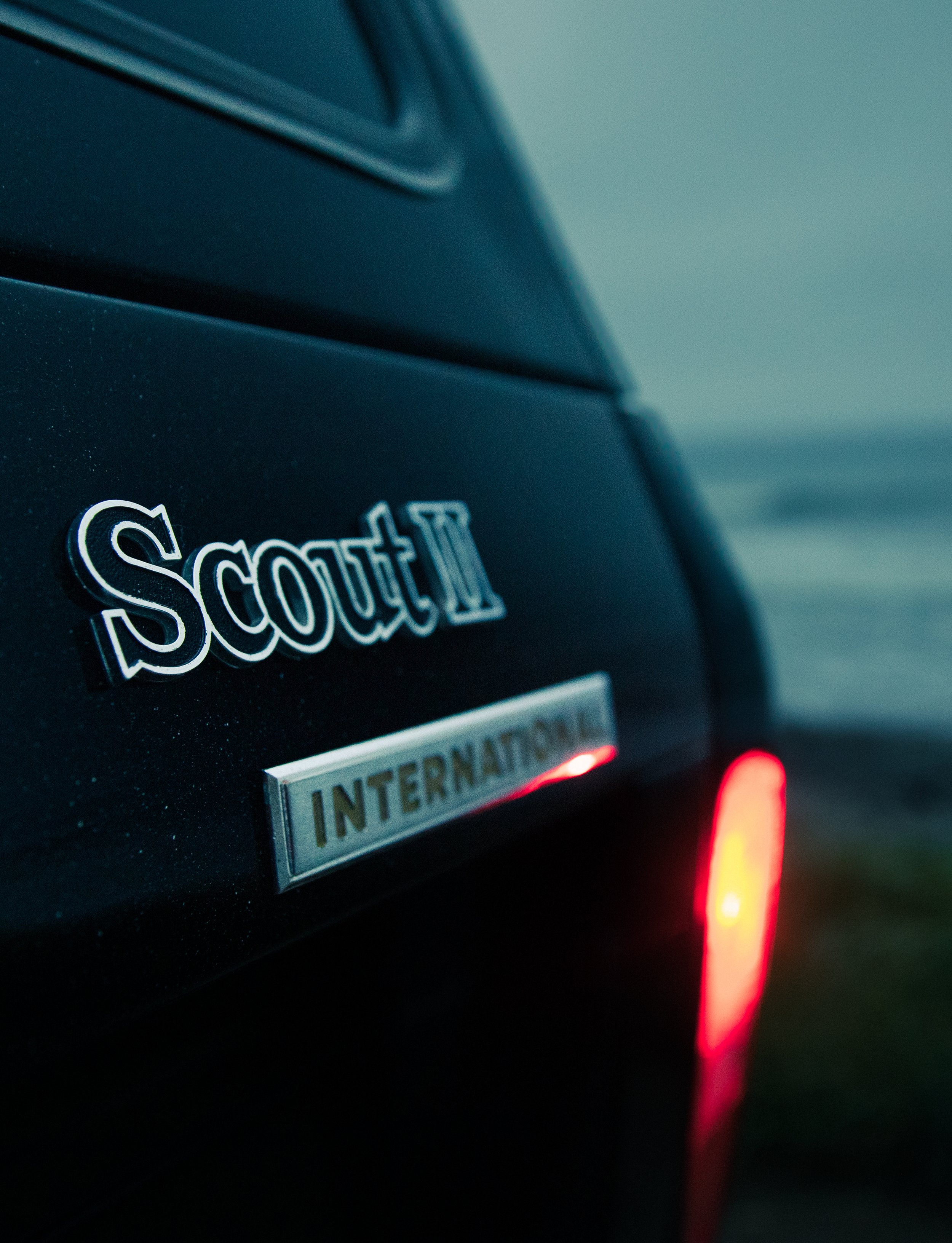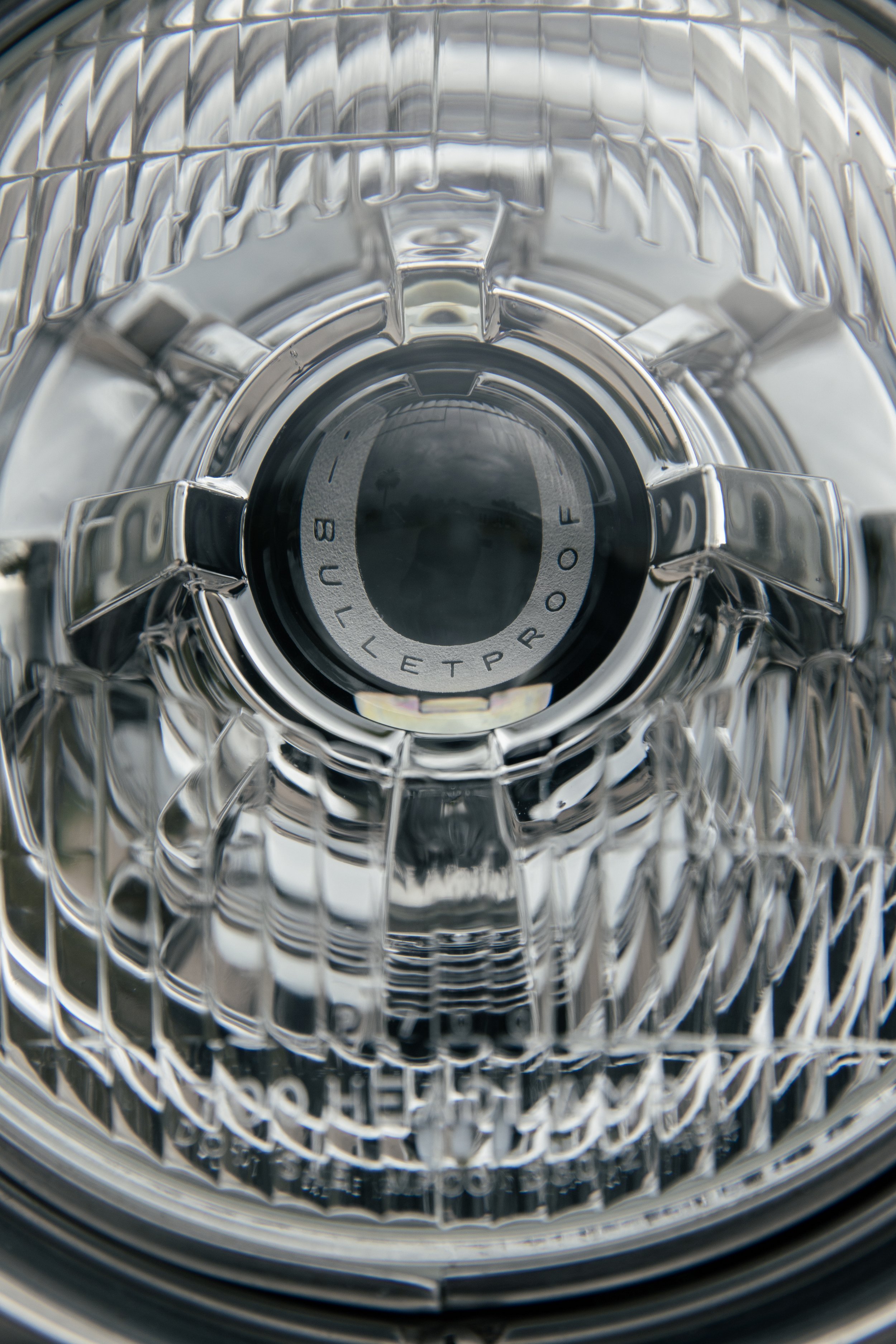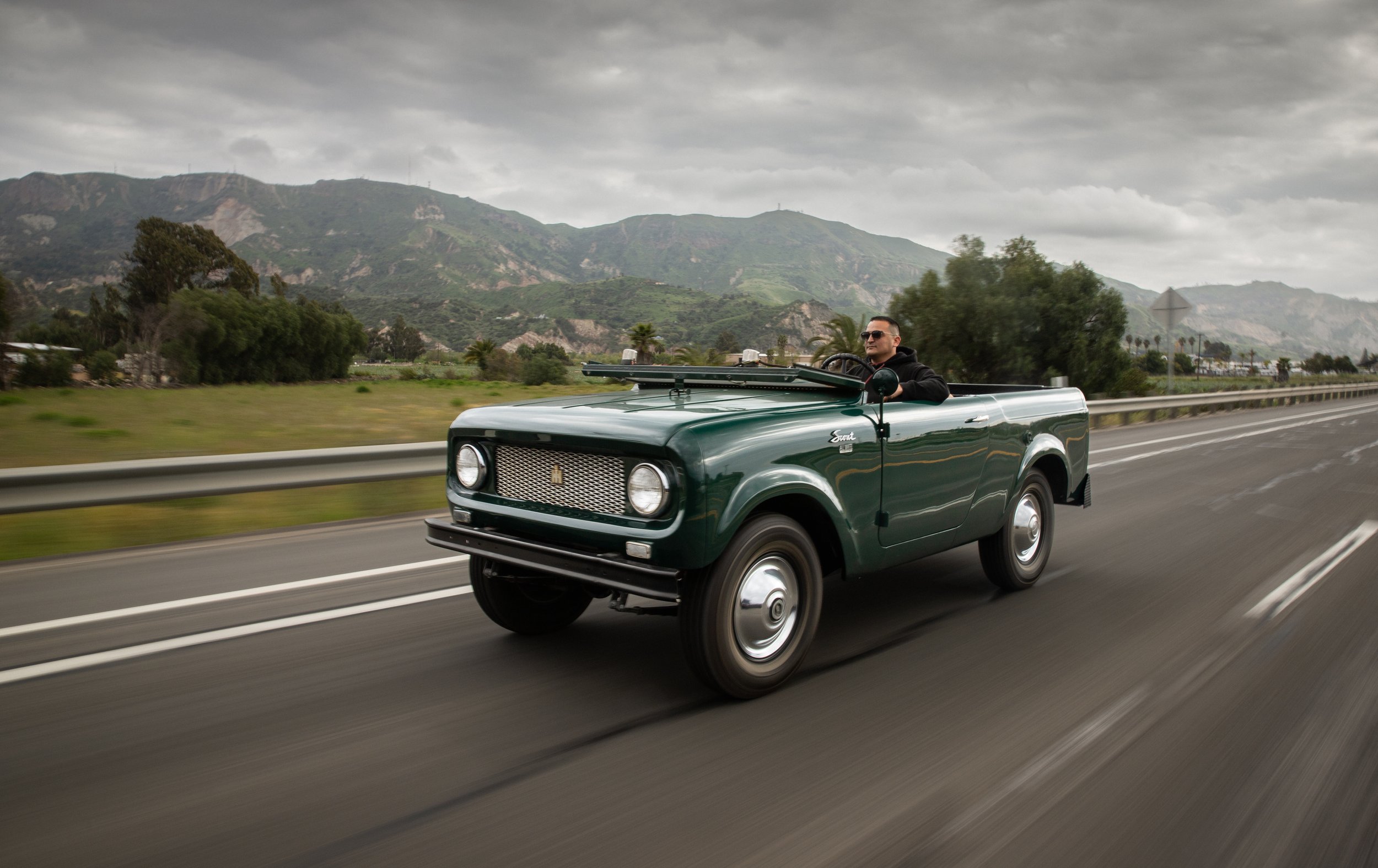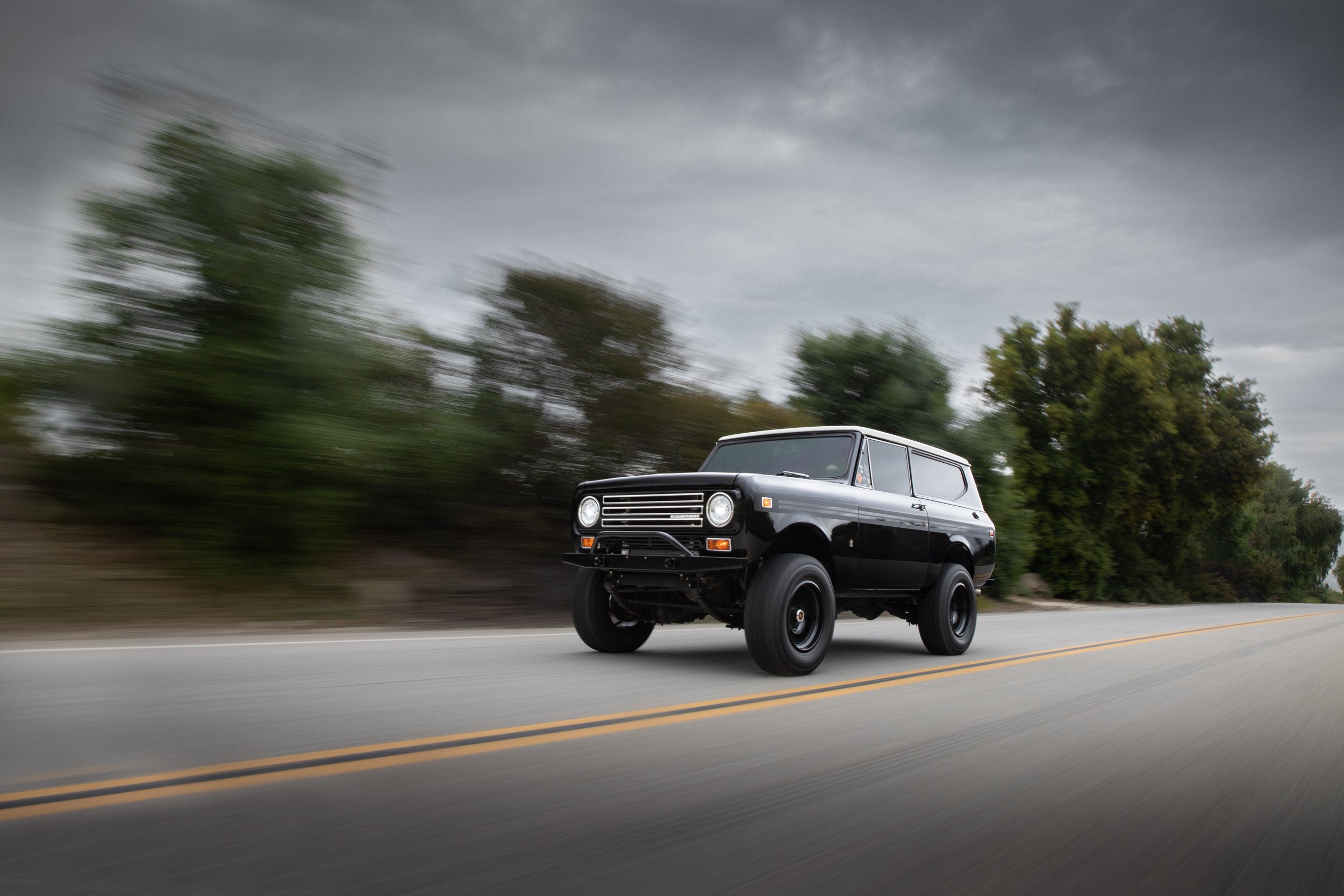SCOUT’S HONOR — THE REVIVAL OF AN ICONIC OFF-ROAD BRAND
STORY | Michael Van Runkle
PHOTOGRAPHY | Marc Shap
Scott Keogh remembers the lightbulb moment clear as day. A crisp summer afternoon, taking his children to the beach in the family VW ID.4, sun angled just right, diffused with mist off the sea. The only other car in the parking lot: a classic International Harvester Scout.
“Life was peak COVID-19 craziness, I went to the beach with my two kids,” Keogh says. “It was a nice hidden little beach that we can go to, no one else will be there, and everything’s totally cool. One vehicle was there, an orange Scout, perfectly positioned beautifully there. And I was just like, ‘Son of a bitch! Man, that car is just awesome!’”
That image, whether real or stitched together out of conflated memory fragments, just about perfectly sums up the Scout’s timeless appeal. Outdoor adventures with the family, nostalgia for freer days of old, escaping to eminently Instagrammable locations— luckily, Keogh at the time ran Audi’s North American operations and realized that Volkswagen had acquired a company called Triton, which through another subsidiary called Navistar owned International Harvester and therefore, the Scout nameplate. Once home from the beach, back in front of the computer, the wheels started turning. “It just triggered everything,” Keogh remembers. “I went back, banged out a couple of slides and those slides, if you want to simplify it, led us to kind of where we are today.”
BRINGING SCOUT BACK TO LIFE
Now President and CEO of Scout Motors, Keogh recognizes that as great as the moment sounds in hindsight, that lightbulb would probably never have flashed without the burgeoning community of International Scout fans, owners, and restorers that are alive and well in the enthusiast automotive community today.
“I’m not sure whose car that was, but somebody restored it in a beautiful orange, jacked it up,” Keogh explains. “Whether it’s Bulletproof [Restorations] or whether it’s the host of other people out there, these have been the crusaders, for lack of a better term, that have kept the Scout brand iconic, kept the Scout brand alive, and frankly, kept it cool.”
The Scout name and brand might survive in the corporate world thanks to Volkswagen AG’s many mergers and acquisitions, but actual examples of original Scouts rarely live to ripe old ages. The Scout’s long production run ended back in 1980 after multiple generations, iterations, engine options, and special editions— not to mention a serious place in off-road racing history, with multiple Baja, SCORE, and American off-road race wins. Over the following decades, a small but passionate fan base endeavored to keep their Scouts running, despite a terrible tendency toward rust issues that seemed to crop up almost as soon as the cars left the assembly line.
“Rust is a significant factor,” Bulletproof Restorations founder and CEO Jake Barba admits. “I’m sure you’ll get a different explanation from many different people who restore these cars as to why that happened. Some say that the origin stories of the rust were that International bought a bunch of remaining steel that was left outside for a significant period of time and then stamped all their metal out of that.”
More than one other urban legend pegs the origin of International’s rustiness alternately to thinner metal used for the body panels and frame, or perhaps even the significant customer base who lived near the International factory in Fort Wayne, Indiana, where weather conditions subjected trucks to so much snow and salted roads each winter.
Next, throw in the fact that shortly after International debuted the first Scout, Ford released a surprisingly, some might say suspiciously, similar SUV called the Bronco in 1966 and Chevrolet soon followed suit with the K5 Blazer in 1969—both with the weight of much more significant operations to help ramp up production and sales. Plus, Ford and Chevy offered their SUVs with beefy V8 engines, as opposed to the inline four and inline-six engines that initially imparted Scouts with a more agricultural spirit (and very much in line with other farm implements sold by International Harvester).
Despite arguably inaugurating the SUV era in 1960, when the Scout debuted as a sort of enclosed Jeep for the masses including many WWII GIs returning from the European, African, and South Pacific theaters, International Harvester by the late ‘70s faced dire financial straits, a union strike, and questionable business leadership.
BATTLING RUST TO BUILD RESTOMODS
International Harvester as a whole shuttered in 1985, shortly after Scout production ended in 1980. But today, despite rust accumulating over time, the original SUV endures. Sheer volumes produced—estimated at just over 500,000 for the Scout through 1980 versus around 400,000 for the Bronco’s five fewer years over that period, and nearly a million for the K5 Blazer through 1991—mean that relatively few Scouts ever existed on the road, even before taking into consideration casualties due to metallurgy, accidents, or sheer owner neglect. Eventually, as Bronco and Blazer restomods began commanding enormous premiums at auction, the classic Scout looked like something of a steal.
“I picked up one of my first ones for, I think it was like $2,500 or $3,000,” Barba remembers, “And it was, to me at least, just as cool then as it is now. I think it is a little bit of the rarity, I also think that it was a thing where people were able to get these for less money than a Bronco and have something similar from a sort of pop-culture perspective.” A Scout in original condition without any rust at all is a rarity, to be certain. And just picking up a hulking classic deteriorating daily into a heaping pile of orange oxidation doesn’t exactly fit into the image of classic Americana that Keogh and Barba believe the Scout can call up. So today, the recipe for modern restorations always starts with plenty of remediation to repair the damaging effects of time, but as Barba’s trucks show, many ingredients can make driving a restored Scout far better than the original.
The key, as Keogh and Barba both recognize, is keeping that original spirit alive while updating an icon. “There’s a reasonable formula that stays close to the same,” Barba explains, “However, every single car is different…. Some cars you might have to replace more of the floor than the others. Some you’re replacing whole panels, like whole doors, whole fenders, literally larger parts than others. It just depends on what you’ve got.”
Barba got into the Scout restoration game after buying that first project for only a few grand in 2010. He will openly admit to shopping for a Bronco before discovering the Scout semi-loophole in the classic SUV market. And he’s less shy about exactly how not to restore a Scout, lessons learned when he sent his own truck to a shop in Iowa, spent thousands on a restoration, and then received a semi-complete heap of cobbled-together parts that simply wouldn’t run right.
After selling two tech companies and investing big in Bitcoin, Barba at the time faced the prospect of early retirement— but the process of slowly fixing his own truck evolved into a business helping other Scout owners who faced similar situations, then inevitably undertaking his own full restorations.
“We basically blow the frame off the body, take care of everything underneath,” he explains. “We sandblast and powder coat the frame, we redo all the suspension points, all the reverse shackle mounts, basically every nut and bolt of what would then be the underside is completely redone. All the welds are reinforced.”
The list goes on and on, but throughout rust remediation and drivetrain swaps and interior refreshing, Bulletproof aims to either retain or improve exactly what makes a Scout special at every crucial touchpoint.
What looks like analog gauges actually plug into modern computer readouts controlling LS V8 motors; the power steering still feels light but the box has been updated along with thicker tie rods and drag length to correct the steering geometry for the new drivetrain’s lighter weight; the brakes now employ hydroboost to improve stopping power, both given the newfound power but also because vintage drum brakes can feel downright scary at over 100 miles per hour—unfathomable speeds for original Scouts but which Barba’s builds can manage without excessive tramlining, steering wobble, or boat-like wandering.
Barba’s fastidious goals approach Singer Porsche levels of immaculate detail, but the improvements also can’t go too far, he says. “It still drives like an old truck. I think there’s a certain nostalgic factor when you get to drive an old car, you expect some of these things.”
Keogh, for his part, seems sold on Bulletproof’s ability to transform a classic Scout into a daily-driveable restomod with all the essential elements that made the original so great. So, Barba recently sourced a 1973 Scout II out of Texas in, again, semi-restored condition—already equipped with a 6.0-liter L96 V8 and fourspeed automatic. The Scout is set to receive Bulletproof’s steering, suspension, and braking upgrades, plus, of course, the full bespoke interior, custom wheels, and knobby tires to hone the look that Keogh fell in love with that day at the beach.
RE-ESTABLISHING THE ELECTRIC SUV ERA
Of course, a new electric Scout from Scout Motors can’t retain exactly the same exterior and engineering as International’s original icon—federal impact regulations and fire-retardant standards, not to mention airbags and electric cutoff points, make the pipe dreams so popular on fan forums quite simply impossible. But both Barba and Keogh recognize the importance of playing to the Scout’s quintessential styling in the new packaging, while listening to the existing Scout community’s input and expectations.
“Talking design now,” Keogh says, “It has some iconic, fundamentally well-recognized proportions. It’s crystal-clear and you can draw that out yourself in terms of the A-pillar, in terms of the stance of the vehicle, how it rocks back in terms of the window treatment, in terms of the axle ratio. Crystal clear. And we definitely want to keep those iconic because they’re fundamental.”
In addition to the crucial task of working with and understanding the current Scout community, Barba believes a new group of devotees await in the wings as a strong customer base, too. “If you design it in a cool way that makes it a little bit more unique than the Tesla, a little bit more unique than the Rivian,” Barba said, “You have an opportunity to capture a Gen Z audience that will potentially want an SUV or a truck that is full electric that can now carry their family or their kids or their friends. And it actually has a chance, to some degree, to become the first real electric SUV.”
That customer base may well fit better into the beachy vibes of the scene Keogh witnessed mid-COVID with his children. But the new Scout needs to toe a fi ne line in the sand between the kind of rugged utility that appeals to the rural buyers, as well as the clean style and hip tech that better caters to city slickers. Broaching the burgeoning electric market with a nameplate that brings up nearly ubiquitous feelings of nostalgia for the better days of America yore should help—as opposed to introducing yet another alphanumeric crossover from a German, Japanese, or Korean brand.
“When we look at the name, of course, it gives you a lot of classic Mid-America Americana with its farming background and heartland background,” Keogh says, adding, “But you don’t just see ‘em in a farm field in Iowa or Indiana. You see ‘em in Venice, you see ‘em in Malibu, you see ‘em in New York, you see ‘em in Greenwich.”
Meanwhile, the off-roading community that puts original and restored Scouts to the test in dirt, sand, and rocks also needs to know that unlike a Rivian or Hummer, for example, the Scout can handle abuse—and also receive service in the field when necessary. Rest assured, Keogh says, the team at Scout Motors has been listening.
“First and foremost, this is an entirely new platform, so it’s not as if we’re taking SSP, we’re not taking MEB and putting a Scout hat on it,” he says. “We actually want to bring a vehicle that kind of keeps this sort of American frontier spirit, where there’s still some mechanicalness and control to the thing. So you won’t see everything in the touchscreen, you’re gonna see switches, you’re gonna see differentials, and you’re gonna see the ability to work with the car as opposed to the car as an all-knowing spaceship.”
The divide between rugged off-roader and VW ID.4, for example, stands as a clear dividing line. But neither will the new Scout arrive as anything similar to a Tiguan—a great little crossover, but entirely the antithesis of what Scout Motors needs to deliver. The current era of electric cars can trend towards over-technification with one large touchscreen, digital controls for turning on headlights or adjusting mirrors, hill descent programming, even full autopilot software. Retro themes in the expanding EV market seem to help counter those impressions, as Keogh explains.
“I think a little bit of what we can capture is that seventies moment,” he says, “Where there was just this nostalgic sort of love and simplicity and everything else. I think when you view electric cars, I think there’s some view that they’re so complicated, they’re so new and other-worldly. So we wanna kind of marry these two things, and I think we can.”
Barba acknowledges that the new Scout Motors faces a tough task, but sees the wider market sitting at an inflection point for electrification. “I’m very hopeful that this is their moment to say, ‘We’re gonna redesign this car, we’re gonna use some of the old-style cues, and we’re gonna make it, effectively, the electric status symbol of what it is to have an electric car.’”
To the extent that International inaugurated the modern SUV and crossover era, the fact that most of the originals never survived long enough to witness the sea change in consumer preferences almost seems sad. Even current industry nomenclature harkens back to that fi rst forebear, Keogh laughs.
“If you think of Scout, you can almost think of every SUV,” he lists, “All of their names are basically Scout in another dimension: 4Runner, Explorer, Pathfinder, Trailblazer, Blazer…”
Now, as the beginning of a new era rapidly approaches, perhaps a revived Scout can pave another path forward, serving once more as the standard bearer designed and engineered for the bifurcated masses, while retaining the essential character that gives today’s restomods such unique presence within an increasingly homogenized automotive landscape.






















